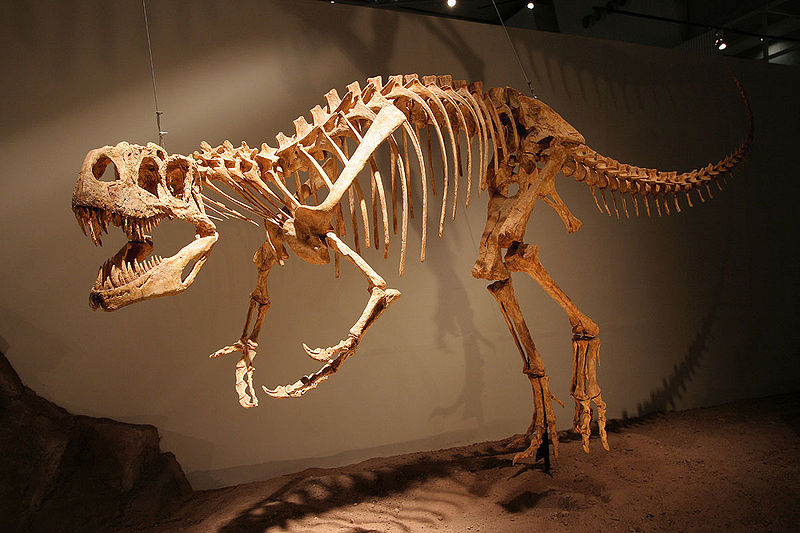[Recent Entries][Archive][Friends][User Info]
| May 28th, 2012 | |
|---|---|
| 09:22 pm [industrialterro] [Link] |
Afrovenator Афровенатор (Afrovenator) — род вымерших ящеротазовых динозавров из семейства мегалозавридов, группы тероподов, живших в юрском периоде (около 175—145 миллионов лет назад), на территории нынешней Африки. Окаменелости теропода были найдены в местности Agadez (формация Tiourarén) в Нигере. Впервые описан палеонтологом Полом Серено в 1994 году. Представлен одним видом — Afrovenator abakensis. Afrovenator ("African hunter") is a genus of megalosaurid theropod dinosaur from the mid Jurassic Period of northern Africa. It was a bipedal predator, with a mouthful of sharp teeth and three claws on each hand. Judging from the one skeleton known, this dinosaur was approximately 9 metres (30 ft) long from snout to tail tip and had a weight of about 1.5 tons. The remains of Afrovenator were discovered in the Tiourarén Formation of the department of Agadez in Niger. The Tiourarén was originally thought to represent the Hauterivian to Barremian stages of the early Cretaceous Period, or approximately 136 to 125 million years ago (Sereno et al. 1994). However, re-interpretation of the sediments showed that they are probably mid-Jurassic in age, dating Afrovenator to the Bathonian to Oxfordian stages, between 164 and 161 mya. The sauropod Jobaria, whose remains were first mentioned in the same paper which named Afrovenator, is also known from this formation. Afrovenator is known from a single nearly complete skeleton, featuring most of the skull (minus the mandible, or lower jaw), parts of the spinal column, hands, and forelimbs, a nearly complete pelvis, and complete hind limbs. This skeleton is housed at the University of Chicago. Most analyses place Afrovenator within Megalosauridae, which was formerly a "wastebasket family" which contained many large and hard-to-classify theropods, but has since been redefined in a meaningful way, as a sister taxon to the family Spinosauridae within the Megalosauroidea. A 2002 analysis, focused mainly on the noasaurids, found Afrovenator to be a basal megalosaurid. However, it did not include Dubreuillosaurus (formerly Poekilopleuron valesdunesis), which could affect the results in that region of the cladogram (Carrano et al. 2002). Other recent, more complete, cladistic analyses show Afrovenator in a subfamily of Megalosauridae with Eustreptospondylus and Dubreuillosaurus. This subfamily is either called Megalosaurinae (Allain 2002) or Eustreptospondylinae (Holtz et al. 2004). The latter study also includes Piatnitzkysaurus in this subfamily. A few alternative hypotheses have been presented for Afrovenator's relationships. In Sereno's original description, Afrovenator was found to be a basal spinosauroid (he uses the name "Torvosauroidea"), outside of Spinosauridae and Megalosauridae (which he calls "Torvosauridae") (Sereno et al. 1994). Finally, another recent study places Afrovenator outside of Megalosauroidea completely, and instead finds it more closely related to Allosaurus (Rauhut 2003). This is the only study to draw this conclusion. Megalosauridae was a family of relatively primitive tetanuran theropod dinosaurs, order Saurischia. They were small-to-large carnivores with sharp teeth and three claws on each hand. Some members of this group were Megalosaurus, Eustreptospondylus, Streptospondylus and Torvosaurus. Megalosaurids first appeared in the mid Jurassic and seemed to have been displaced and replaced by other theropods by the end of that period; their fossils are known from Europe, North America, South America and Africa. They are considered by most researchers (Sereno 2005, Olshevsky 1995, Holtz 2004, etc.) to be close relatives of the spinosaurs. Like Megalosaurus itself, the family Megalosauridae, coined by Huxley in 1869, had traditionally been used as a 'wastebasket' group, which included a wide variety of unrelated species (such as Dryptosaurus, Ceratosaurus, Indosaurus, and even Velociraptor). Because of this traditionally polyphyletic use, some scientists, such as Paul Sereno, reject the family name Megalosauridae in favor of Torvosauridae (coined by Jensen in 1985), despite the fact that Megalosauridae has priority under the ICZN rules governing family-level names in zoology. While a 2008 review of Megalosaurus by Benson and colleagues also found that the relationships of Megalosaurus to other theropods could not be determined, and that the assignment of basal spinosauroids to the family Megalosauridae should be discontinued, further work by Benson reversed this position, finding a well-supported Megalosauridae in phylogenetic analyses.
Размеры тела в сравнении с человеком:
Ископаемые останки (1, 2, 3, 4, 5):
Tags: Вымершие рептилии, Юра, авеметатарзалии, архозавроморфы, архозавры, диапсиды, динозавроморфы, динозавры, мегалозавриды, тероподы, ящеротазовые |











